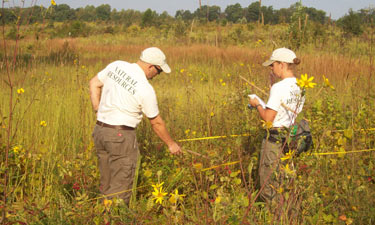 Earth Day Inspirations: Lessons from Mecklenburg County
Earth Day Inspirations: Lessons from Mecklenburg County
With the coming observance of Earth Day on April 22, this week you may want to take some time to think and reflect on the role of parks and recreation in conservation and sustainability. Perhaps you’ll take this as an opportunity to set some conservation goals for yourself and your agency.
If you haven’t read it already, the April Parks & Recreation feature story, Natural Leaders: Parks and recreation agencies lead their communities in conservation, provides a good look into the varied ways parks and recreation are taking up conservation. Each profile lends inspiration and insight into how communities (and Earth!) benefit from the leadership and innovation of parks and recreation agencies. It also provides ideas on how you can advance your conservation and sustainability efforts.
One spotlight in the article is on the Mecklenburg County Park and Recreation Department in North Carolina and their Natural Resources division. Few U.S. park and recreation agencies have divisions staffed entirely by natural scientists, and Mecklenburg’s team of natural resources specialists might seem at first blush like a costly way to invest in conservation. Michael Kirschman, who directs Mecklenburg’s Nature Preserves and Natural Resources division, says the lessons his agency has learned—from dollars saved on consultants to increased national credibility—point to the opposite conclusion.
Kirschman shared with us five key lessons his agency learned from implementing a division of natural resource specialists.
- Cost savings and then some - Cost savings to the county continue to mount because of having professional ecologists, foresters, and natural areas managers on staff. Instead of hiring consultants for issues that arise, the team is able to address them. For example, last year we had an issue at a park where an earthen dam spillway was not functioning properly at an active athletic park facility. We could have hired a consultant to address the situation; however our internal Natural Resources section was able to repair the dam at the cost of just a few hundred dollars in materials. This likely would have cost the agency thousands to hire out. We fixed it internally in two days.
- The expertise is needed – There is public support out there for this type of expertise. When you don’t have it, you don’t think about it or address it, but once you get into managing your natural areas, you start to see just how critical it is.
- Increased credibility - I’ve learned that having professional Natural Resources staff on board GREATLY increases the agency’s credibility when embarking on nearby development projects, land acquisitions, or wildlife management issues.
- Expanded constituency groups - Having a Natural Resources section, that has partnered extensively with outside agencies and organizations (e.g., National Wildlife Federation, Sierra Club, and Audubon Society) GREATLY expands our constituency and advocacy groups.
- A little goes a long way - and in a relatively short amount of time. Our program started roughly 20 years ago, with one staff person. When I think of what we’ve accomplished in that short amount of time it’s amazing. In terms of natural areas management, a little bit of money and the right people can make a huge difference.
What are your thoughts about the benefits of a Natural Resources division within park and recreation agencies? Is this something you do or would like to try to implement? What do you think are ways park and recreation agencies can lead conservation efforts in communities? Will you set conservation goals this year?

